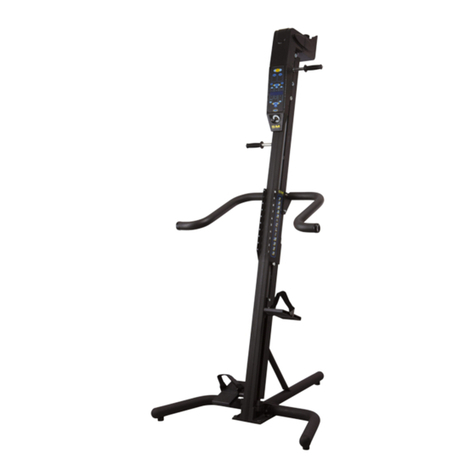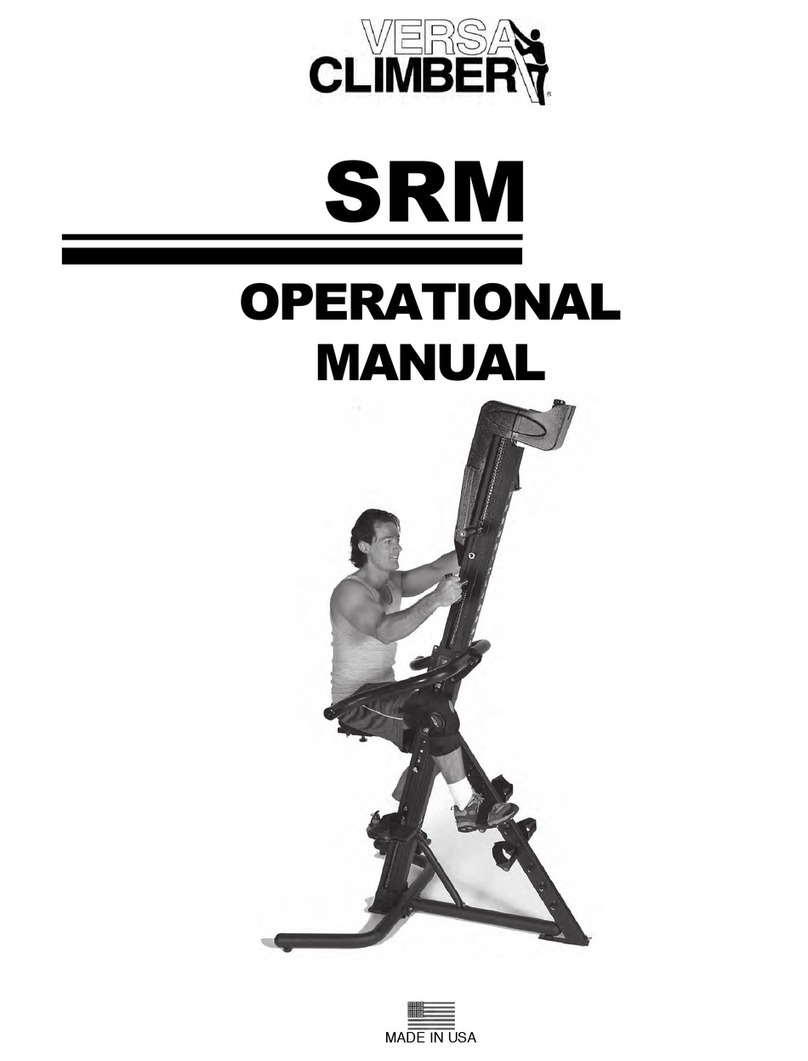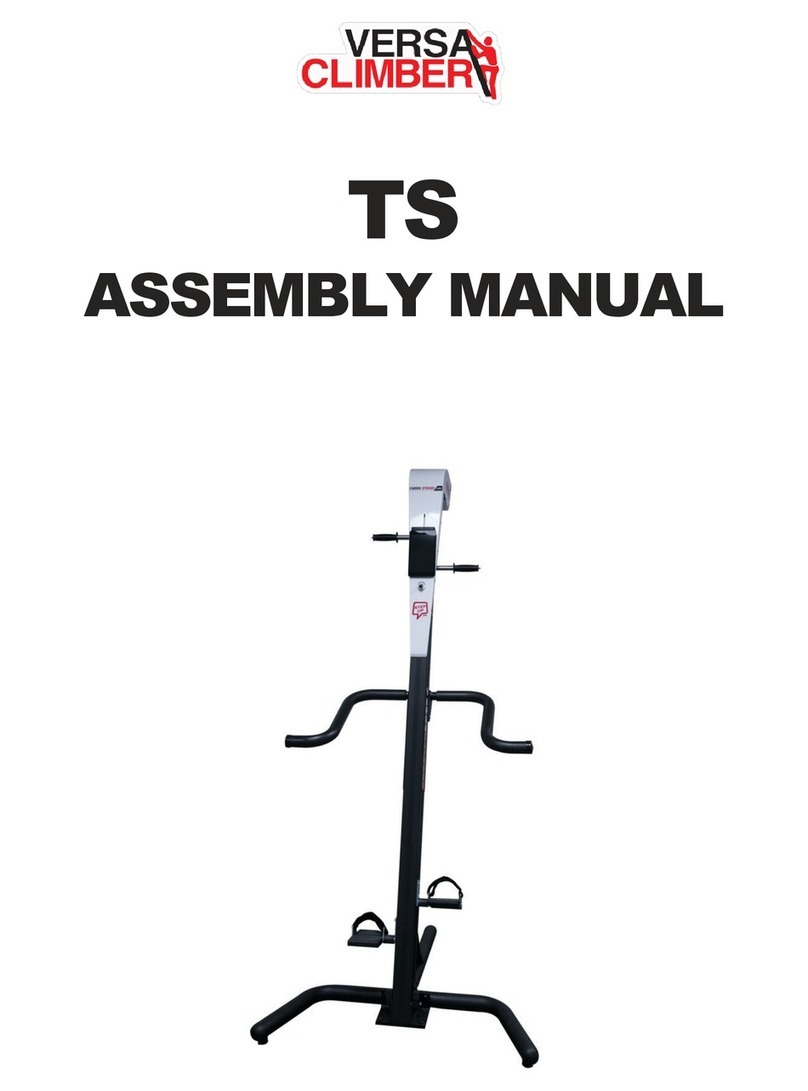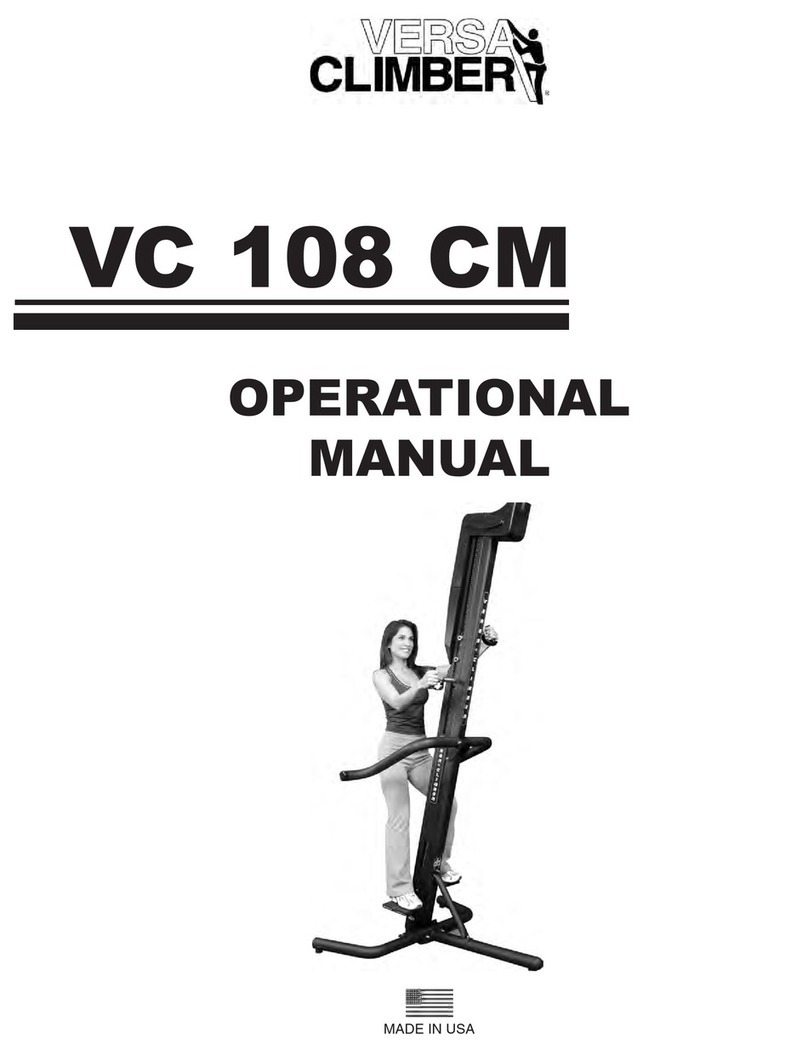versa climber VersaPulley User manual
Other versa climber Fitness Equipment manuals

versa climber
versa climber VC 108 SRM Quick start guide

versa climber
versa climber 108 SM Quick start guide

versa climber
versa climber SRM Quick start guide

versa climber
versa climber TS User manual

versa climber
versa climber CL-108H Quick start guide

versa climber
versa climber VC 108 CM User manual

versa climber
versa climber TS User manual
Popular Fitness Equipment manuals by other brands

G-FITNESS
G-FITNESS AIR ROWER user manual

CAPITAL SPORTS
CAPITAL SPORTS Dominate Edition 10028796 manual

Martin System
Martin System TT4FK user guide

CIRCLE FITNESS
CIRCLE FITNESS E7 owner's manual

G-FITNESS
G-FITNESS TZ-6017 user manual

Accelerated Care Plus
Accelerated Care Plus OMNISTIM FX2 CYCLE/WALK user manual





















